Choosing POS Systems: On-Premise vs Cloud-Based vs Hybrid

Choosing POS Systems: On-Premise vs Cloud-Based vs Hybrid If you’re looking for the perfect Point-of-Sale (POS) system to support your retail operation, it’s important to think about how the system will be hosted when making your decision. In terms of the basics, most POS systems today are fairly uniform. They almost always include: Terminals or tablets for viewing product, customer and sales transaction information Barcode scanners A PDQ (Process Data Quickly) machine for Chip & PIN or contactless card payments Receipt printers Cash storage POS software, which also may include inventory tracking and Customer Relationship Management One of the differences between systems is how they’re hosted and accessed. These models can be broken down into three types: on-premise, cloud-based, and hybrid. Let’s take a look at the differences between them. The Three Major Types of POS System Implementations 1 – On-Premise An on-premise system means that all information is stored locally, on your own systems. So you require suitable servers to ensure adequate system performance and appropriate space or a data center to house the equipment. This does give you a high degree of control over your own data, as well as meaning that your POS system can continue to function even if you lose your external internet connection. There are also security benefits since you aren’t accessing external networks. However, this can also be a very risky choice if you don’t have the correct infrastructure, resource and expertise to maintain resiliency. Unless you setup and maintain database backups, there will always be a significant danger of system failure or data loss. Likewise, if your servers go down, you’ll need an up to date disaster recovery plan to get you up and running as quickly as possible – essential in the always on retail environment. 2 – Cloud-Based With a cloud-based POS system, all the software and data are stored off-site, in external cloud servers. You won’t require your own data center or need to worry about hardware. This means that your system can be accessed anywhere in the world, allowing for robust remote POS setups, or even pop-up stands at locations such as trade shows. In addition, it’s typically very easy to deploy software updates, since updates on the cloud server will be instantly available to everyone. However, data storage and security will only be as good as the cloud host you use. Some hosts may also claim additional ownership or rights over the information. Plus, if you lose your internet connection, you lose access to the system. 3 – Hybrid Hybrid systems are a best-of-both-world solution. They utilise both local and cloud-based servers, often with one set to failover to the other in case of problems. When properly implemented, you get all the benefits of both types, with very few drawbacks aside from being moderately more expensive to initially deploy. Eurostop Eurostop offers one of the most-trusted hybrid POS systems in the world, powering a long list of highly successful retail operations. Contact us for a free demonstration.
Is It Time to Update Your Retail POS System?

If you’re in retail, you undoubtedly have some form of retail POS system in place, with software running your various points-of-sales which are probably linked together in some way. However, there have been big advances in POS software in the past decade – Big advances in both cloud computing and “smart” processing systems that allow modern retail POS systems to go far beyond the terminals and database-style number-crunching typical in older POS software.
What is Mobile Point of Sale? Your Guide to MPOS Systems
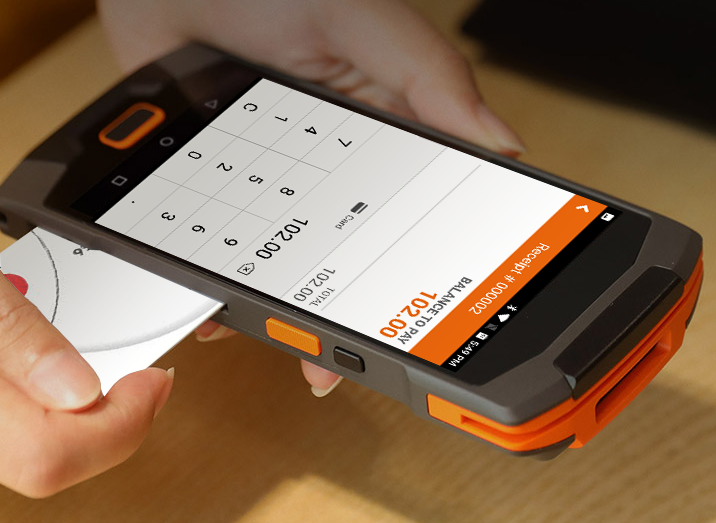
These days, you’d be hard-pressed to find a simple cash register being used to ring up sales at any retail establishment. Technology is advancing at an impressive rate, and the impact is not lost in the retail arena. In a connected world, where omnichannel is key, digitally connected systems are in fact indispensable. These software systems can provide retailers with a host of different features and benefits to assist and empower them do everything from process sales (POS, MPOS) to enhancing customer relationships (ERP software). However, it’s important to understand why mobile point of sale systems are so important for the retail sector, as well as some of the advantages they can provide. That’s why the team from Eurostop has gathered an in-depth guide for you here about the uses and benefits of MPOS software. What Exactly is a Mobile Point of Sale System? Before diving into the benefits and other details of mobile point of sale systems, it’s important to have a clear understanding of precisely what they are and how they work. Unlike traditional POS systems that store customer data and take transactions at a fixed till point, MPOS systems are completely mobile. This enables retailers the freedom to get out from behind the cash desk and help customers from anywhere on the shop floor, or even outside a brick and mortar store, while still having all the features of a traditional POS system at their fingertips. Mobile POS systems often consist of mobile devices such as tablets, handheld units or smartphones that take the place of traditional cash registers or point of sale systems. They can also come equipped with add-ons, such as card readers, chip scanners, receipt printers, and other components. In terms of software, the MPOS system links all of these components together, using innovative cloud technology that helps you to track sales better, help customers, and provide any other necessary information to complete sales from any location, as long as there’s a wireless connection. Top 5 Factors to Review When Choosing a Mobile POS System If you’re considering investing in a mobile POS system, there are some important things to make note of, such as: Support for Mobile Payments: These days, many transactions are processed utlising customer smartphones with mobile wallets – the uptake of which has been accelerated by the COVID-19 pandemic, which saw shoppers and retailers curtailing the use of cash. So it’s important to make certain that any mobile POS solutions you implement are compatible and designed for a range of payment methods including mobile payments. This way, your customers can select to use options such as Google Wallet, Apple Pay, and other options, whatever is most convenient for them, which will enhance your brand experience. Most important, you don’t risk losing a potential sale. Support for EMV Chip Credit Cards: Credit cards are created with EMV chips, making swiping unnecessary. Contactless payments are also possible if the sales value is under the contactless limit, or the credit card is simply inserted into a card reader located under the MPOS device’s pin pad, making the process extremely simple. We recommend selecting a vendor that supports an all in one device which will processes integrated payments. This means that your store associates won’t have to carry a separate PDQ (credit and debit card) machine and neither will they rely on a reliable wireless connection, all of which makes the solution truly mobile. Support for Multiple Registers: For large retailers, you’ll need to ensure your mobile POS system can handle multiple registers and transactions simultaneously. Not only will this make the transaction process more efficient, but also offer your shoppers a choice of options and enable you to grow your business without the need to invest in new point of sale software/hardware as you scale up. Reliable Barcode Scanning: Every interaction at payment has the potential to impact the experience that your customer has with the brand. So a seamless checkout experience with accurate and robust barcode scanning is essential. Make sure that your solution uses technology that can scan barcodes reliably every time. Some solutions use phone cameras, or a separate scanning device, but these can be unreliable and increase the footprint of your mobile solution. Even better is an integrated scanner, which will enable you to add items to the sale quickly from the same device, with accurate pricing and promotion information. Top Benefits of Implementing a Mobile POS System There are many benefits to implementing a mobile POS system in your retail establishment. Some of them include: Increased Security: Mobile retail systems help provide your customers with increased security. This is because they all need to comply with PCI guidelines or EMV technology, which offers safer transactions than other alternatives. Reduced Wait Times: With MPOS solutions, you’ll no longer have to risk losing business and a potential sale due to the sight of long queues and increased wait times. As well as assistants behind the cash desk, you will have the flexibility to deploy additional mobile staff on demand to process transactions and assist with customer queries directly on the shop floor. This is especially useful for busy promotional periods or during peak hours. Added Floor Space: One of the biggest advantages of MPOS systems is that they don’t take up any floor space like traditional POS systems. This means more room on the floor to highlight your products. In addition, where social distancing has become mandatory during the COVID pandemic, mobile POS units can give you the added flexibility to make smart use of your space. Customer Data Collection: MPOS systems help you collect important data about your customers from purchase history and preferences to personal information like emails and phone numbers. This makes it easier to implement loyalty programmes and assists you in providing a personalised service when they walk through the door. Easy Reporting: Being able to analyse performance and react to changing footfall, environmental factors and promotional campaigns is paramount to a growing retail business.
Understanding How A Retail EPOS System Benefits Your Business
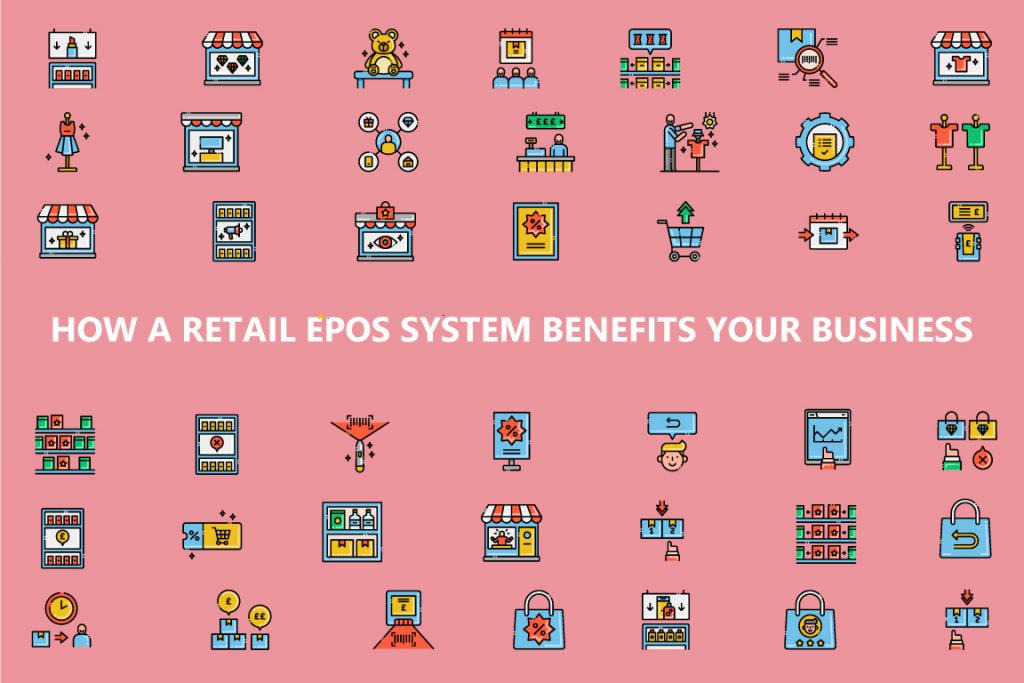
If you operate a retail business of any size, you’re undoubtedly familiar with the term POS – for Point-of-Sale. POS systems are standard in any sales situation, encompassing the till, as well as any hardware used at the point of sale such as screens, barcode scanners, card payment terminal, cash drawers and receipt printers. Now, a new kind of POS setup has appeared: the retail EPOS system. These go well beyond typical POS systems, allowing you to centralise and synchronise data seamlessly between Head Office, online and offline outlets, are scalable and more. In this article, we’ll briefly talk about what a retail EPOS system does, and how the most common features can benefit businesses of any size. The Major Features in A Retail EPOS System Real-time stock data across all outlets One of the most important features of an EPOS system is its ability to allow a single view of stock. You get full visibility into your stock across multiple outlets, including both online and offline channels so that you can see what is available, avoiding customer disappointment and never missing a potential sale. Robust analytical systems A retail EPOS system facilitates accurate data analysis. Since it reliabily tracks and processes sales, stocks, prices, promotions and more across all your outlets, you can be sure that you have the correct data insights on which to base future merchandising decisions. Customer relationship management features With a good EPOS system, you won’t have need of a separate CRM system because it’s all in one package. This is beneficial to you, in terms of saving time and resources, but it will also improve customer journey in store. It also simplifies potentially complicated tasks such as introducing loyalty card programs. All-in-one purchase, payment, and delivery options A good EPOS software package will streamline every area of sales transactions. They should speed up basic sales, while offering multiple payment options and upselling opportunities, empowering your staff to provide the very best service. Likewise, customer service features like returns will be simplified as well. Customisable and flexible Businesses aren’t one-size-fits-all, and neither is EPOS software. Retail EPOS systems are customisable, with different modules for different tasks, and should easily integrate into your existing stack of business software. Eurostop is one of the most popular retail EPOS systems in the world. Contact us to learn why it’s so trusted!
What is the Importance of Retail EPOS Systems?

When it comes to retail, ensuring all of your customers are given the utmost attention is key. That’s why improving the payment process and providing them with efficient service is essential. To attain such goals, many retailers implement a reliable retail EPOS system to help them track inventory, process payments, provide customer benefits, and more. At Eurostop, we’ve helped hundreds of retailers over the years track sales and improve their processes, so we’ve collected some insight for you here. Below you’ll find some of the most important aspects of implementing a system with reliable retail POS features. Pricing Benefits When it comes to pricing the products in your retail establishment, a retail EPOS system can help drastically reduce errors. This is because the system keeps pricing consistent by synching with your stock control or ERP system so that scanning a barcode gives you accurate pricing information, avoiding user error. Of course, discounts, sales, and other customer incentive programs are also programmed into your EPOS software, with additional options to override, depending on staff permissions set by Head Office. Tracking Employees The right EPOS system can also help you keep an eye on your employees. You can monitor their performance and what they’re doing, as well as reduce wasted time by making employees responsible for their own registers and payment terminals. You’ll also be able to track top-performing staff members and see where others need improvement. Inventory Management With reliable retail POS solutions, you’ll be able to keep a close eye on all of your inventory. Each time a customer purchases a product, that product’s stock level will be automatically updated, ensuring you know exactly how much inventory you have at a given time and when it’s time to order more. You can also check your stock’s performance to determine best-selling items and optimize your retail floor. Customer Service Retail EPOS systems make it easy to serve your customers. By making the buying process faster and more efficient, you’ll reduce wait periods. Additionally, EPOS systems can help you tailor to your customers’ specific needs, bringing up data about past purchases and other info to help you better serve them. It also makes it easy to run customer incentive programs and offer special discounts for loyal customers. Increased Efficiency EPOS systems can drastically increase efficiency by cutting down the number of employees needed to track payments or stock shelves manually; the POS system does all of these things. These automated solutions reduce the need for relying on human resources, enabling you to save money on operation costs and focus your resources elsewhere. Let us be your retail EPOS system provider; contact Eurostop today! Do you want to improve your retail process, keep better track of employees and customers, and save time and money! If so, our team of retail EPOS experts would love to hear from you. To learn more about our solutions, contact Eurostop online today or call +44 (0) 20 8991 2700.
All You Need to Know About Retail EPOS Software

If you own a retail business, then one of the best ways to get a handle on staff, customers, and inventory is to invest in retail EPOS software. However, before doing so, it can be helpful to learn a bit more about the different applications it’s used for and the solutions it offers. That’s why the team from Eurostop has collected some insightful facts for you below. What’s to Know Before Investing in Retail EPOS Software? Here, you’ll learn all you need to know about retail EPOS systems, so read on! What Are EPOS Terminals & Peripherals? Electronic-point-of-sale (EPOS) terminals are what retailers use to process transactions and track sales. The hardware and software often involves a touch screen terminal and EPOS peripherals such as receipt printers, barcode scanners, cash drawers, chip and pin readers, and more. Why Are EPOS Systems so Important? If you’ve been getting by with a manual system for years, it might not seem like switching to EPOS software is that important. However, you might not be aware of some of the benefits you’re missing. It can increase your overall productivity by centralizing data, providing communication management solutions, more efficient store replenishment, revealing business insights through reporting and streamlining the retail checkout process. Additionally, EPOS software helps reduce costs by allowing you to make the most of your inventory by managing stock effectively and having it in the correct place to meet demand. Important Considerations to Make Before investing in a retail EPOS system, there are a few important considerations to make, such as: Taking the Growth of Your Business into Account: Do you plan on expanding your retail business in the coming years? If so, then choosing a retail EPOS provider that can grow with you is essential. Make sure that the system you choose can be easily integrated with all your existing software, scaled up if necessary, and will be compliant in the relevant geographical locations that you operate in.. Choosing a System Specialized for Your Industry: When it comes to Retail EPOS Software and systems selecting a system designed for your industry is essential to ensure that you can get the most out of it. For example, for retailers in the fashion or footwear industry, implementing an EPOS system that can organize products at the color and size level and provide reporting along those lines is key. Eurostop can streamline your processes with advanced Retail EPOS Software! If the benefits above have convinced you to take that next step, the team from Eurostop would love to hear from you. To learn more about our innovative Retail EPOS Software and systems, contact us online today or call +44 (0) 208 991 2700.
POS for in store cafés, enhancing the brick and mortar experience
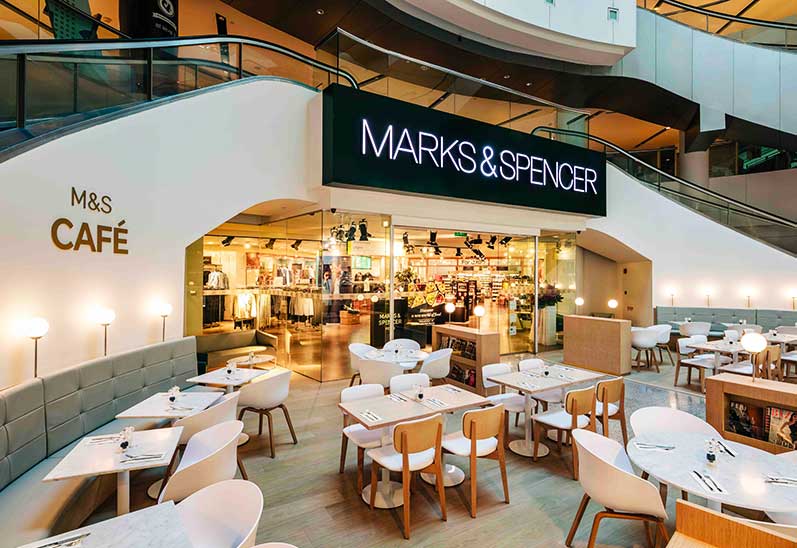
Innovative technology designed specifically for retailers to manage in store cafés The Customer Experience is on the rise Winning retailers are investing in the customer experience. Despite many claiming the demise of the high street due to online competition, shoppers are still demanding the experience and services offered by physical stores. Research from RetailEXPO claimed 73% of UK consumers would spend more time and money in stores that offer experiences, not just product. And with 60% stating that they would visit a retailer for their cafés, bars and restaurants, not to mention in-store events such as cookery tastings, wellness classes and music events, now is the time for retailers to embrace experiential shopping. ‘Retailtainment’ is here. To stay ahead, retailers must find new ways to engage customers – while still managing stock, operations and promotions more effectively and cost-efficiently. “An in store café can increase customer dwell time, improve loyalty and encourage repeat visits through a positive experience.” Eurostop Café Mode – streamlining the in store café customer experience Café Mode on Eurostop’s e-pos touch enables retailers to provide an additional dimension to their in store service, providing customers with the choice to enjoy food and drink in their in store café, using the same POS terminal to take payment for goods at the same time. Running themed promotions and offers across the store and café can entice customers to stay longer and enhance their shopping experience. An easy to use till system designed with the busy café in mind The in store café POS combines all of the features of Eurostop’s stock management system and POS system with those of a condensed hospitality module. It includes: Features Quick buttons and optional colour coding on the tillpoint enabling staff to navigate the system easily and take orders as quickly as possible, minimising queuing. Cashiers can switch between ‘Café mode’ and standard till mode at the touch of a button, allowing them to take payment for food and drinks, or goods at the same till point. A Kitchen Order Management system provides separate tickets for food and beverage items sold, and notes where they originate – from the fridge, kitchen or hot drinks machine and links all orders to the appropriate table number, for efficient table service. An End of Life management feature prints labels to override barcodes with any discounts later in the day, as bakery and other foods near their sell by date. Connected retail systems enable management reports and insights on desktop, tablet and mobile for retail and café sales to be tracked at any time of the day, from any location. Seamless customer service, accurate sales reporting and flexibility for promotions Eurostop’s in store café POS provides retailers with an up to the minute view of sales and stock across the business, whether retail stock or café food and beverages. With the latest information, promotions or discounts can also be applied, rewarding customers for loyalty and improving waste and costs management: Benefits Streamlines customer experience, allowing payment for goods and drinks at café tillpoint with connected in store systems. Improves café efficiency and reduces waste by enabling discounts on perishable food items to be increased throughout the day. Enables enhanced customer promotions – coupons can be printed at the till for use with the next customer visit or purchase. ‘One connected retail system’ provides management reports and overview of all retail sales across business, whether café sales or store merchandise. Real-time reports allow managers to make adjustments with discounts or stock replenishment throughout the day to maximise turnover. Quick and easy to use with minimal training, helps staff to take orders quickly, so avoiding queues and providing a better customer experience. For more information on opening an in store cafe, please contact us to speak to a retail expert and talk about our award winning cafe POS mode, or call Eurostop Sales on 0208 991 2700
Missguided EPOS Rollout in New Bluewater Store & Other News
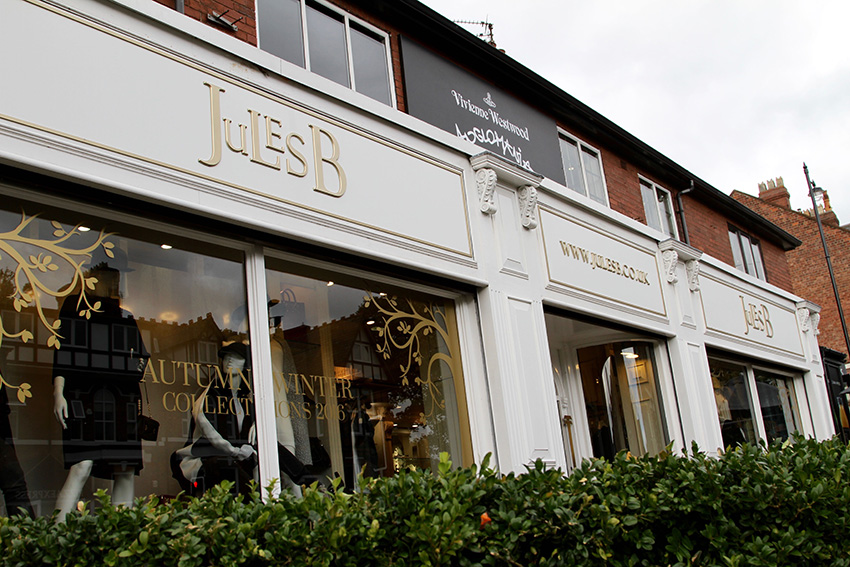
It’s been an eventful month in the news, and also at Eurostop. We have lots happening here in the UK, so I wanted to share a few updates with you. EPOS Rollout at New Missguided store in Bluewater Images sourced from Dalziel & Pow Everyone in the office was looking forward to having a look inside the new Missguided store at Bluewater. This is the second bricks and mortar store for the retailer and we are certainly excited to be part of their journey onto the high street. A big congratulations to Nitin Passi and his team who opened their new store earlier this month. New Partnership between Eurostop and Global Blue Tax Free Shopping Global Blue is a market leading tax refund operator, helping retailers to sell more and grow their business. I have signed a new partnership agreement, so that we will be integrating our EPOS software, e-pos touch, with Global Blue. This will allow our retailers to have the option of offering their international customers an attractive price reduction by providing them with the documentation to reclaim the VAT after they export their goods. The EPOS integration will allow retailers to issue a Tax Free Form from their EPOS terminal quickly and efficiently. This feature is expected to be available in e-pos touch in September 2017. Diebold Nixdorf Partner Summit Europe 2017 Dinesh Peerez and Phillip Moylan represented us at the Partner Summit Europe 2017 in Madrid. Thanks to our hosts Diebold Nixdorf for a great event and to Nicolas Segons for inviting us. Diebold Nixdorf is our chosen EPOS hardware supplier. It was very interesting to hear about their vision for Connected commerce and the Future of Retail. Dinesh and Phillip briefed me on their key takeaways from the conference. I’m sure that these will feature in some of our future posts, so be sure to look out for them. AI is going to disrupt the retail environment A cashless society is here to stay Retail changes are being driven by customer experiences Go live of e-fulfilment with e-pos touch at JulesB JulesB were our first customer to receive our new Fulfilment module with out latest EPOS software. Thanks to Tom Jeffreys and his team for their input during the rollout. I wish them continued success with the business.
Is Bricks and Mortar in Terminal Decline?
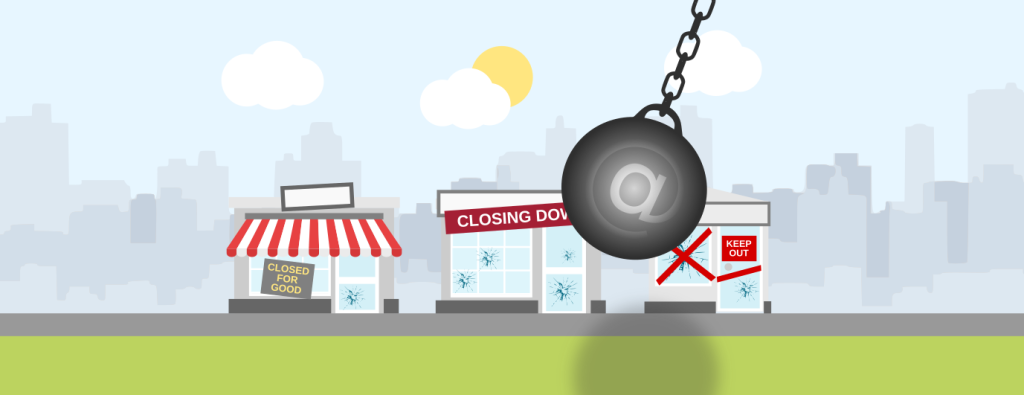
Recently I read this blog about how bricks and mortar retail is in decline. There are some persuasive statistics to back up the byline, but personally I can’t help but feel excited about the potential of what is to come in physical retail spaces, if only retailers can get it right. Digital disruption need not spell the end for bricks and mortar stores. Instead focusing on changing consumer expectation, behavior and needs for a new generation could re-imagine a whole new retail environment, where digital needs to be embraced. ‘Omnichannel ‘ is the buzzword of today, but surely the utopia is where there are no longer perceived ‘channels’ but the physical and digital merge so that all retail touchpoints are one of many on–demand interactions with the brand? The Professor professes to a lack of customer service in traditional stores, and I have to say that as a consumer I do often find this to be true, but why not use digital technology to assist and differentiate, rather than shut them down? why not use digital technology to assist and differentiate, rather than shut them down? As Millennials, also known as Digital Natives or Generation Me, enter their prime spending years,it seems clear that they will drive a ‘Customer centric’ approach to products and services. Surprisingly, the physical store continues to be important in their journey to purchase, they just expect more out of the experience. Retailers need to get to know their new friends, who are described amongst other things, as tech-savvy, impatient, demanding and social. By adapting the in-store experience to suit the wants and needs of the new generation, those retailers will make sure that they stand tall above the rest. The physical store continues to be important in their journey to purchase, they just expect more out of the experience. On the high street there are stories of retailers succumbing to current pressures, but turn right, and you will see shining examples of those who are evolving and changing the status quo with a new level of technology and services. Online retail certainly has choice, convenience and value for money on its side, but shouldn’t retailers build on the unique value proposition of the high street as part of its offering? Better in store customer experiences I stand in awe at the retail giant that is Apple. Their minimalist stores are always packed, and yet upon purchase of one of their items in store, I come away impressed with the service and thought that they have put into the ‘Apple experience’. As I browse and test out the latest devices that are conveniently Wifi connected (I can indeed participate in the worrying trend of ‘showrooming’, or simply check out some online reviews), I can’t help but notice another customer, who has been bought an Apple Watch by her husband as a birthday present. She is not rushed to complete the transaction (by mobile payment, while seated at a bench), but is then offered help in setting up her new purchase. Surely this goes against the grain of serving more customers in less time? I imagine that she will return home excited and show her newly ‘connected’ watch and experience with her friends – the best type of brand ambassador. Embrace the physical space The pure play etailer Missguided has recently opened 2 new stores in the UK. The visual experience in store doesn’t disappoint and is a 3-D extension of their brand persona, brought to life in the physical realm. No longer is a shop just a shop, but an inspiring and entertaining place to be, and you want to go back for more – pop culture language is inherent in all the décor, and talk of unicorns just takes you to a fun place where you might hang out with friends – which they hope you will be. The constant and live stream of fashion inspiration on the immersive digital displays brings the digital and physical world together. It seems like the investment in store design paid off. This online success story now has a place you can visit, why wouldn’t you want to hang out and share on social media? Get to know them There are many other examples of brands that are building relationships with us. In an age where we are no longer limited by geographical boundaries, consumers have endless choice and information at the touch of a screen. Retailers really need to be on the ball in nurturing personalized and engaging relationships with their brand. With a wealth of digital analytics and data available, by implementing the right tools and technology, retailers can get insights into the preferences of their customers and adjust their marketing and promotions accordingly. For example notifying customers of offers that they are likely to be interested in, based on past shopping history. These promotions have to be seamless across physical and digital ‘boundaries’, because the consumer of today expects nothing less. Understand your customers, not only how they like to shop, but their lifestyles and the communities that they live their lives in. Convenience is key and retailers need to determine the preferences of their demographic. For example, if their customer base has a large mobile following who engages on social, they need to make sure that they have a slick mobile app with built in social sharing to the right platforms. Understand your customers, not only how they like to shop, but their lifestyles and the communities that they live their lives in. Right here, right now Millennials have grown up with smart phones. This hyper connected generation always has their devices on hand – accustomed to getting what they want, when they want. This urgency also applies to expectations for services in store. This hyper connected generation always has their devices on hand – accustomed to getting what they want, when they want. Certainly from a personal point of view, I have walked back out of a store, if I see that there
Worldwide control of your e-pos estate from your e-manager dashboard
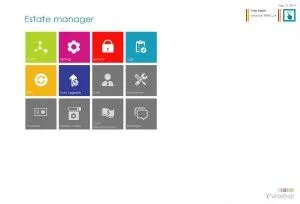
We are delighted to announce the release of our new product e-manager. This new software sits between your ERP system and your EPOS solution enabling synchronisation of product and pricing data. e-manager enables retailers of any size or geography to benefit from the specialist nature of our EPOS solution while using their own ERP system. At the same time, you are able to use e-manager to build resilience and scale-out into your systems as store level data can be held across one or multiple server farms. Available in the cloud, in-house or at a third party hosting site, e-manager can be deployed as a single, remote, small footprint database. For larger organisations, multiple copies can be deployed, where each instance holds a subset of data, controlling a specific range of stores. These become networked in a server farm; synchronising and managing store level data in a pyramid fashion to ensure maximum availability. e-manager also comes with a comprehensive configuration dashboard that provides essential information and tools to remote IT teams. It allows monitoring of the online status of your e-pos estate, and also controls when new operating parameters are to be transmitted across the whole estate, an international or local region or to individual terminals within a store. Also driving the e-commerce platform, e-manager ensures that multiple product codes remain identical across Omni-channel points and store servers. Find out more
